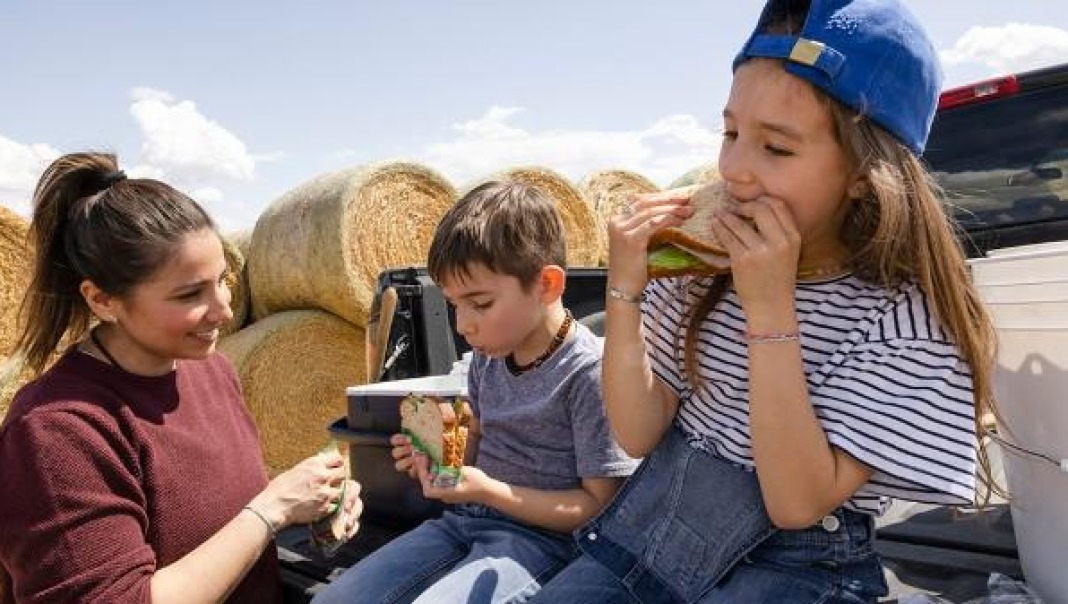4 farm-friendly ideas to help with the childcare struggle
Tuesday, November 14, 2023
Reference: FCC
 Is a lack of quality childcare holding women back on the farm?
Is a lack of quality childcare holding women back on the farm?Agriculture and Agri-Food Canada’s report, What We Heard Report – Agricultural Labour Strategy, details feedback received during consultations on developing a National Agricultural Labour Strategy. The report notes childcare as an issue for women who want to stay in agriculture long-term.
The report also notes that many strong contributors to the industry feel hesitant to take certain jobs because they don’t want to be torn between the demands of the job and childcare.
Labour shortages, remote rural living, parents working hard and safety also contribute to the age-old issue of childcare on the farm.
And while carting the kids along for a parts run or bringing a tricycle into the barn may sometimes provide a solution, reliable, quality childcare is also critical. There isn’t a tricycle lane at every job on the farm, and kids can’t always be at our sides.
Ramping up the focus
The issue is receiving increased focus and effort, according to Brenda Schoepp, a business consultant and mentor who has studied and works with women in agriculture. Raising her kids as a single mom on a farm, she also knows the risks, challenges and demands that overwhelm parents who farm. She’s also received feedback after speaking to groups about childcare on the farm.“This remains a very big issue,” Schoepp says. “It was described repeatedly as a huge source of stress and often overwhelming for women in rural agriculture.”
Overall, each family needs to find a solution that works best for their own home and situation, and most usually try several solutions before finding the right fit.
Here are four creative solutions farm families across the country have come up with for childcare:
1. Take turns with neighbours
Different crops, farms, weather conditions or other variables may mean one farm is less busy than the next on any given day, freeing up Mom or Dad to care for the neighbours’ kids and their own during the downtime. That could open the door to alternating childcare among neighbours. Reach out to your neighbours to see who’s willing to try it. It may take effort to sort out a schedule, so be patient.2. Find another way to work with staff
In Portage la Prairie, Man., Sam Connery-Nichol, manager of Connery Farms, has more than 300 acres of produce, grains and pulses and 50+ staff during peak periods.Before she had children, Connery-Nichol would meet with staff daily. But that didn’t work so well after her child was born. Instead, she set up a group chat on WhatsApp that allows for quick check-ins, directions and brief conversations among team members. While she still may have a group sit-down with the team, those and one-on-one conversations have largely been replaced by WhatsApp.
3. Bring a childcare provider to the farm
Having someone in your home for childcare can take many forms – whether an arrangement with a relative, hiring a neighbour or a local student. But Aimée Ferré Stang, a content marketing program manager at FCC who also farms in west central Saskatchewan, near the Alberta border, opted to think bigger and go further afield than her in-laws next door when she needed childcare for her two young sons.She hired an au pair for two consecutive years, bringing a youth between 18 and 30 to Canada to live and work at her home on the farm. A finished basement provides a private living space for an au pair, and Ferré Stang is clear in the job posting that the location is rural, so the au pair knows what to expect.
Ferré Stang familiarized herself with an au pair job site and spoke to others who hired au pairs before posting her first advertisement.
4. Create new options
In Prince Edward Island, Amber Dennis still lives in Souris, the small fishing and tourist community she grew up in. Now that she has her own family and operates a restaurant, she faces the same challenges as farm families – a need for quality childcare. At the same time, she needed to beef up her business venture during the quiet winter months, after the tourists had gone home and when the fishing boats sat idle.Dennis recognized that her friends, family members, business contacts and rural farm neighbours faced the same childcare issues as she did. As a result, she decided to operate an after-school childcare program in the restaurant in the off-season.
In its inaugural year, Dennis has space for eight children, including her young daughter. The childcare arrangement means she avoids shutting down her facility for the winter and, at the same time, offers service to the community.
“It’s parents that are farmers, nurses, paramedics, entrepreneurs,” she explains of those she helps during the school season. “Everyone will always need care for their children.”
Rural childcare is an age-old challenge, and while letting the kids tag along may work sometimes, it isn’t a solution to childcare on the farm. Support from peers, neighbours, family and friends, creative thinking and flexibility can help you find the best solution for you and your family.
Read More
Sign up to stay connected
- News
- Property Alerts
- Save your favourite properties
- And more!
Joining Farm Marketer is free, easy and you can opt out at any time.
